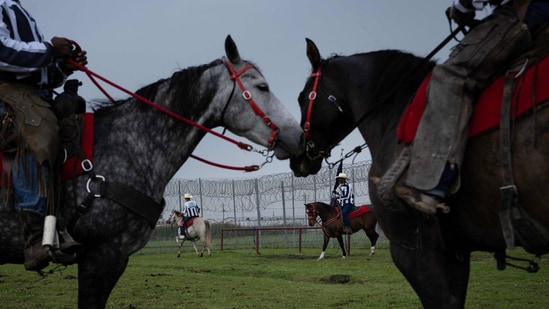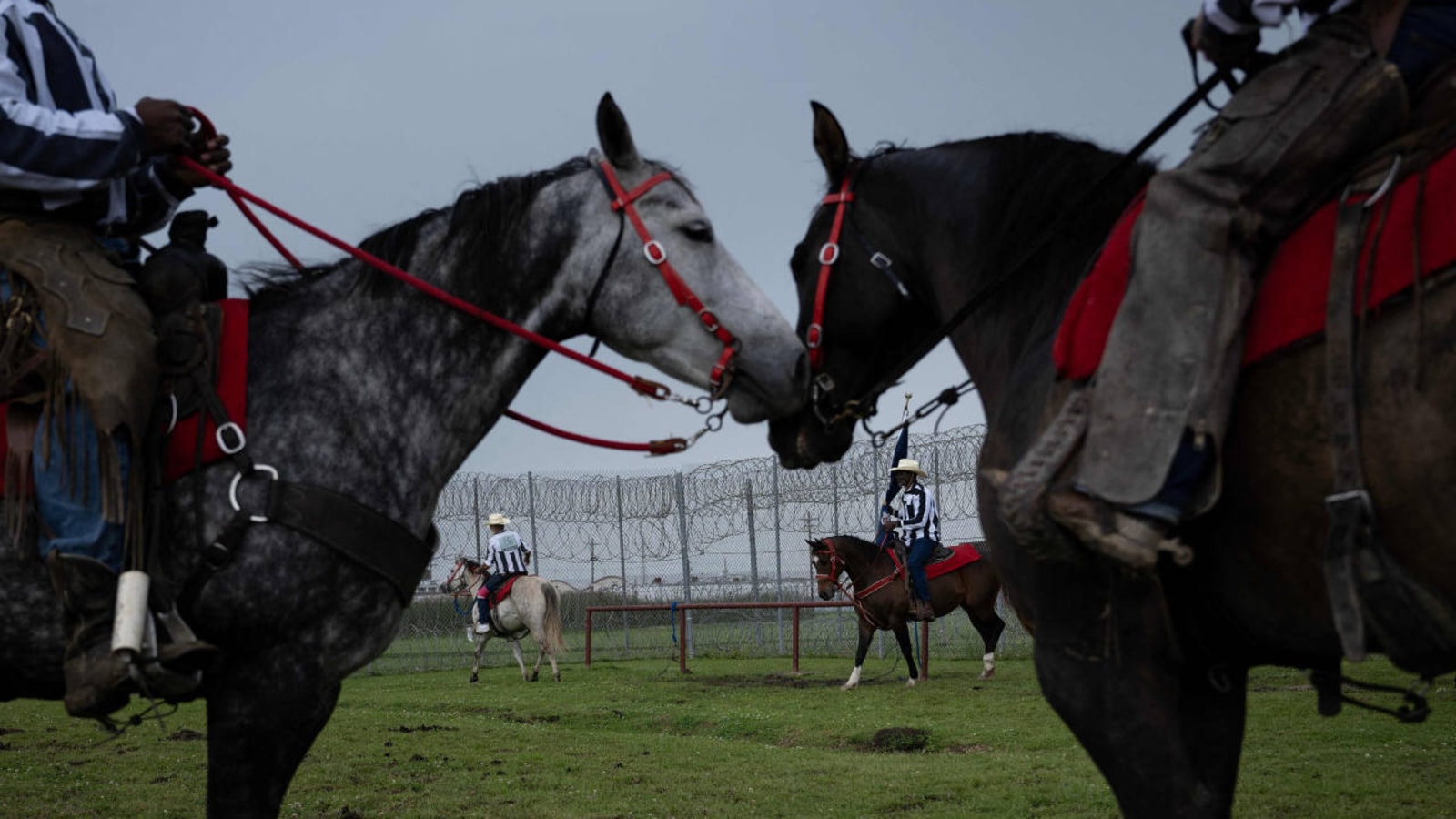The Trump administration is planning to house immigrant detainees in a notorious Louisiana prison, according to people familiar with the matter, the latest effort to accommodate—and spotlight—its immigration crackdown.
 PREMIUM Louisiana State Penitentiary in Angola, La., where more than 70% of the roughly 4,300 inmates are serving a life sentence.
PREMIUM Louisiana State Penitentiary in Angola, La., where more than 70% of the roughly 4,300 inmates are serving a life sentence.
The Louisiana State Penitentiary at Angola, once known as the bloodiest prison in the country, is the largest maximum security facility in the U.S. Spanning 18,000 acres and surrounded by farmland, it draws tourist groups and hosts prison rodeos where inmates compete. The Trump administration expects the facility will provide 450 beds to detained migrants and plans to announce it early next month, the people said.
Using the prison could save the cost of building a new facility like Florida’s new “Alligator Alcatraz,” supporters say. Critics say the arrangement would put people facing allegations of civil violations near those convicted of violent crimes.
Today, more than 70% of the roughly 4,300 people currently housed at Angola are serving a life sentence and over 90% were violent offenders, according to the latest data from the state’s Department of Corrections. Both levels are higher than Louisiana’s other state-run and local prison facilities.
“The idea of placing people in a brutal prison for alleged violations of immigration law is profoundly disturbing,” said Eunice Cho, senior counsel at the American Civil Liberties Union’s National Prison Project. “There is a very long history of abuses at this particular facility.”
U.S. Immigration and Customs Enforcement, which recently saw its budget more than tripled by Congress, has been racing to expand its detention space. Those efforts have also included temporary tents, despite safety warnings. Officials have also expressed a preference for detention centers run by Republican states and local governments rather than private prison companies, The Wall Street Journal has reported.
“There seems to be an intent to create sadistic terror in immigrant communities by establishing these detention sites across the country,” Cho said.
Angola faced public backlash as early as the 1880s over working conditions and inmate deaths, according to the Louisiana Prison Museum & Cultural Center. In 1951, dozens of prisoners slashed their Achilles tendons to protest brutality and working conditions of the facility. The group became known as the “Heel String Gang.”
After the prison’s operating budget was reduced and conditions began to deteriorate in the 1960s and early 1970s, stabbings became so routine that the prison earned a reputation as one of the bloodiest in the country. Inmates sued the state, the museum said, and a federal court mandated reform.
Louisiana in 2023 stopped detaining children at Angola after a federal lawsuit, according to the ACLU. Now, “it looks like the administration is looking for another population of people to send to that facility,” said the ACLU’s Cho.
Inmates at the Angola Prison Rodeo, which includes some unique events.
The prison is also known for its rodeo, which has been running since 1965. Held in an arena that accommodates over 10,000 spectators, the event features bull riding and bronco riding as well as “Convict Poker,” where inmates are seated at a table as a bull runs loose; the last player sitting wins. In “Guts and Glory,” inmates must remove a poker chip fastened to the head of a longhorn bull. Inmate participation is voluntary, the museum says, and proceeds fund recreational and educational programs at the prison.
The prison offers tours and touts itself as a “much sought after” destination for school groups and churches. Tours focus on the prison’s history, according to its website, as well as the initiatives that transformed it into “a model prison.” Groups don’t enter prison camps or dorms.
Louisiana’s governor last month declared a state of emergency to expedite repairs on a defunct cell block at Angola. Known as Camp J, the section was closed in 2018 after cell locks malfunctioned, allowing inmates to evade security checks. Dozens of weapons were found at the time due to security lapses, according to Gov. Jeff Landry’s executive order, which describes Camp J as having deteriorated into a condition that creates significant threat of injury to individuals “in and around its premises.”
Florida Gov. Ron DeSantis used emergency powers to take control of an airport training facility deep in the Everglades swamp for use as a migrant processing center, called “Alligator Alcatraz,” unveiled last month.
“That’s not a place I want to go hiking any day soon,” President Trump said during an early July tour. “It might be as good as the real Alcatraz.”
The president has also called for the original Alcatraz—the famed island prison that was turned into a top tourist attraction in San Francisco—to be reopened and used “to house America’s most ruthless and violent Offenders,” Trump wrote in a Truth Social post in May.
Many San Francisco boosters and visitors aren’t as sure, saying they favor the preservation of Alcatraz as a museum. More than a million people travel to the island each year, according to the National Park Service.
Homeland Security Secretary Kristi Noem this week announced a partnership with Indiana to add 1,000 detention center beds. She called the initiative “The Speedway Slammer.”
Write to Michelle Hackman at michelle.hackman@wsj.com and Roshan Fernandez at roshan.fernandez@wsj.com
